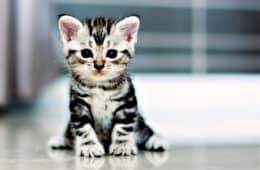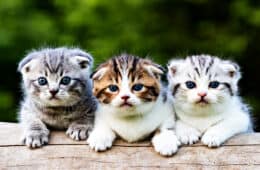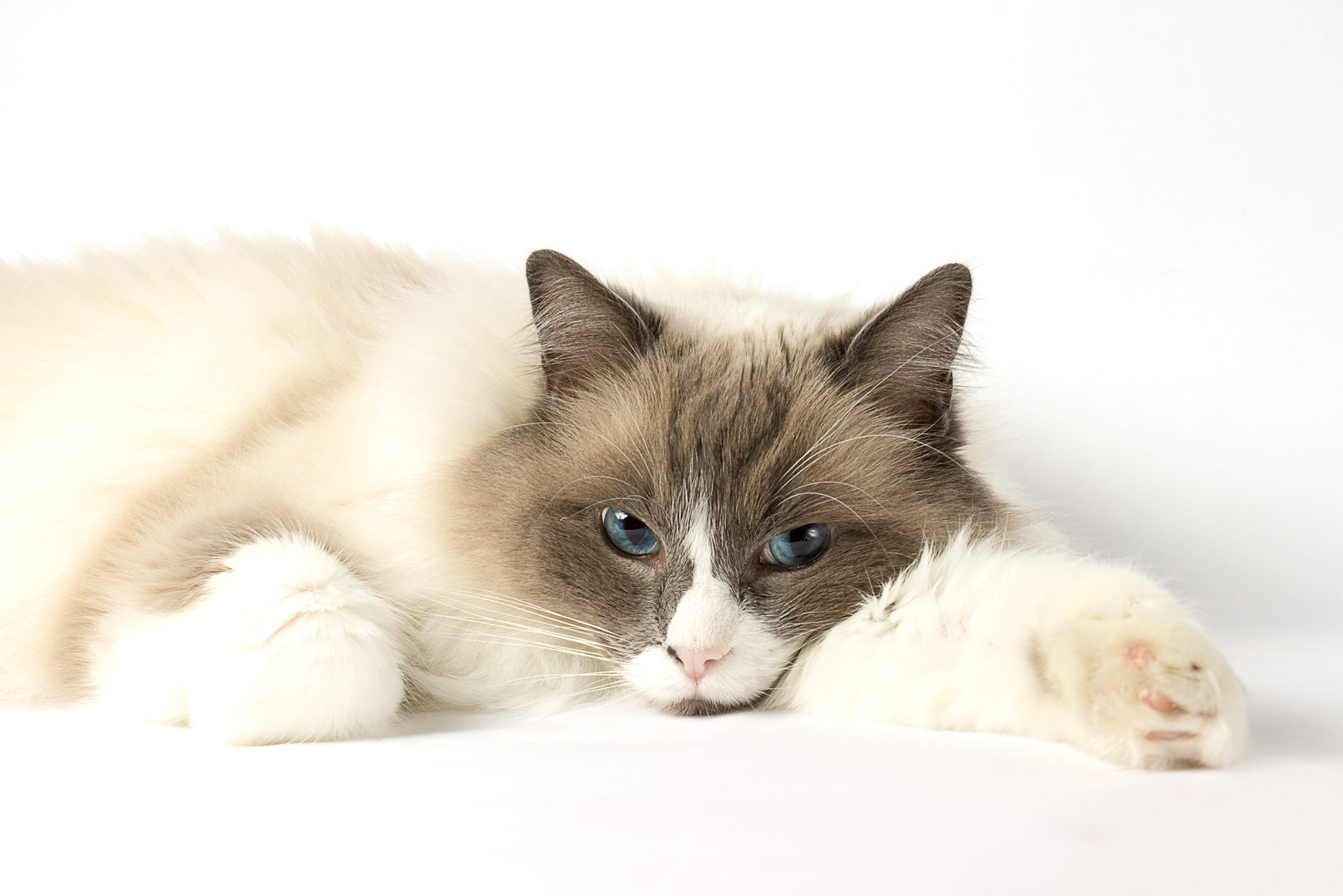From the rugged landscapes of Norway comes a breed of cat that has captured the imagination of many. The Norwegian Forest Cat is no ordinary household pet; its origins are steeped in mystery, its features honed by a harsh climate, and its abilities a blend of grace and raw power.
How did this breed become a symbol of Scandinavian wilderness, and what makes it an exceptional climber and hunter? Are the myths and legends true?
In this article, we'll journey through the history of the Norwegian Forest Cat, explore its physical attributes, learn about its temperament, and uncover its transformation from a working farm cat to a star in cat shows. Join us, and discover a cat that defies the ordinary!
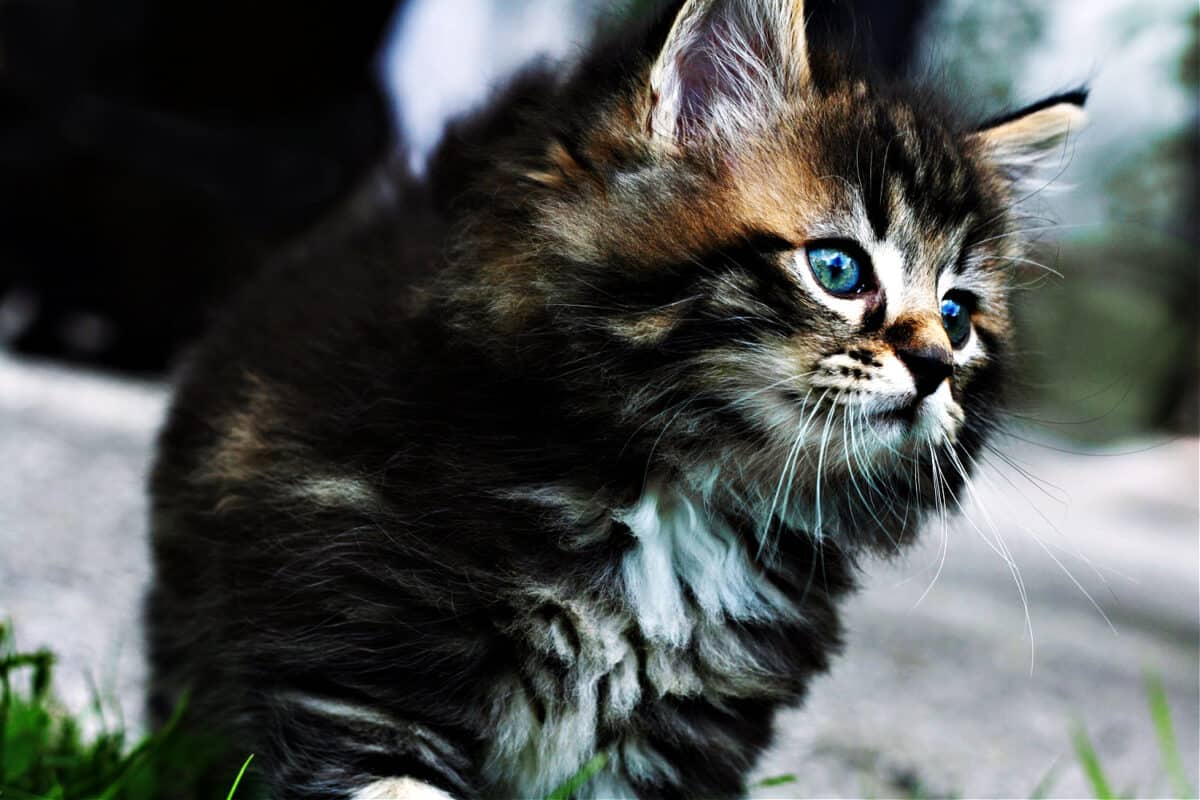
Origins and Evolution of the Norwegian Forest Cat Breed
The Working Cat of Norway's Farms
The Norwegian Forest Cat began its journey on the farms of Norway. It was a natural outdoor working cat there. Over centuries, this cat has transformed. It learned to survive the harsh Norwegian climate.
Built for the Cold: The Unique Coat
The cat's double-thick long-haired coat is a marvel of nature. During winter, the cat develops a dense undercoat. This protects it from the bitter cold. The overcoat is glossy, thick, and water-repellent. It is the cat's shield against the weather.
More than Average: A Closer Look at Physical Attributes
The Norwegian Forest Cat is larger and stronger than most domestic cats. Adult females weigh between 7.9–17.6 lb, while males weigh 9.9–19.8 lb.
The long, sturdy body and bushy tail are the trademarks of the breed. The coat is thickest at the legs, chest, and head. This coat has a woolly undercoat and a water-repellant top layer. These features help the cat survive the Scandinavian climate.
Norwegian Forest Cats are swift and effective hunters when living outdoors. But they also adapt well to indoor life. They usually live to be 14 to 16 years old.
As a heavy-boned and tall breed, they consume more food than most other domestic cats.
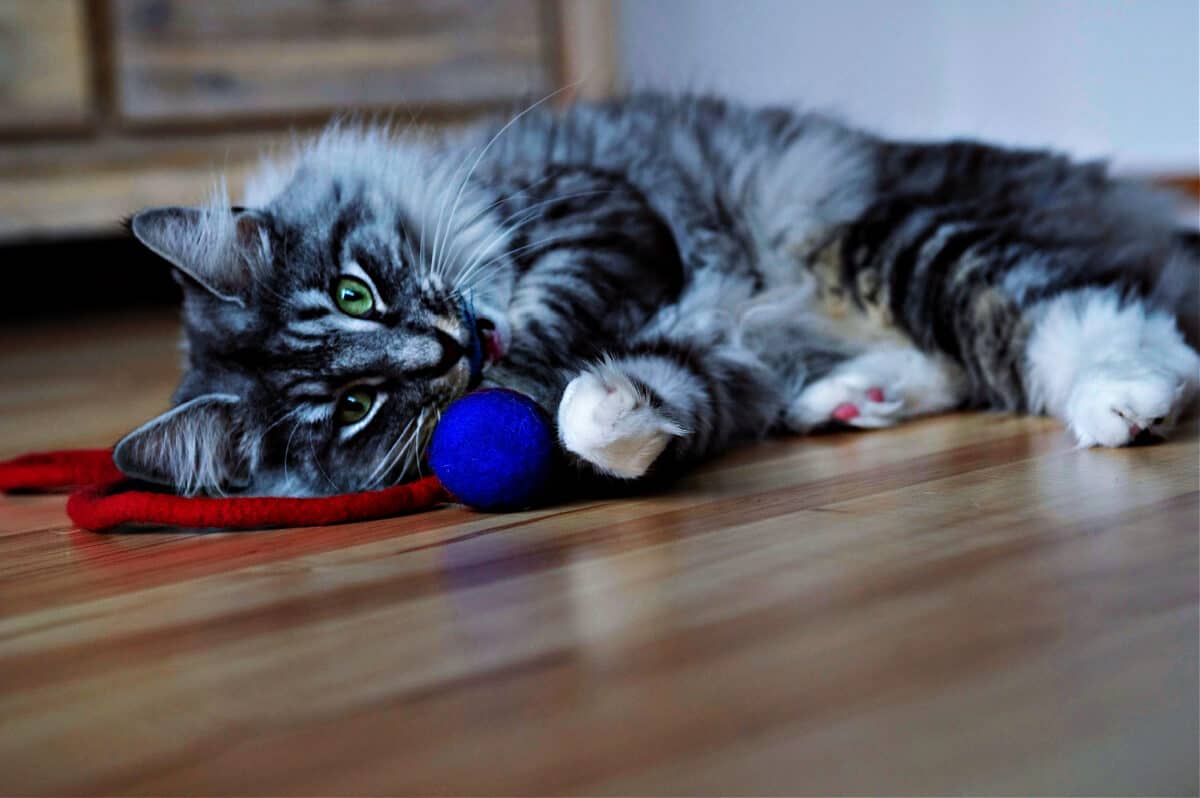
Physical Characteristics Of The Norwegian Forest Cat
Paws Built for Survival
The Norwegian Forest Cat's paws are large. Thick fur covers and grows underneath and between the paw pads. This fur provides protection and warmth. The strong claws make it an exceptional climber. It can climb rocks. This ability sets it apart from other breeds.
A Protective Ruff and Tail
A heavy ruff surrounds the neck and chest, shielding against the weather. This ruff extends around the base of the tail and the backs of the legs. The tail itself is long and bushy. In a true Norwegian Forest Cat, the tail measures as long as the body.
Bones and Muscles: Climbing Machines
This breed boasts a heavy bone structure, broad chest, and muscular body. The hind legs stand higher than the front legs. These features make them skilled climbers on any surface. Unlike other cats, the Norwegian Forest Cat descends trees head first.
Comparison to the Lynx and Size Details
Spot a Norwegian Forest Cat in the woods, and you might think it's a Lynx. The wild look, patterned coat, and tufted ears are similar. However, the Norwegian Forest Cat is much smaller.
Adult males weigh 14-16 pounds, and females weigh 8-12 pounds. They reach full growth and maturity at 3-4 years old.
The Head, Eyes, and Ears
The head of the Norwegian Forest Cat is long, shaped like an equilateral triangle. It has a strong chin and a medium-length muzzle. A square or round-shaped head is considered incorrect.
The eyes are almond-shaped, oblique, and can be any color. The ears are large and tufted at the top. They resemble the ears of a lynx.
They show an alert expression. Long hairs sprout from their ears, adding to their unique appearance.
Coat Colors and Patterns in Exhibition
In the exhibitor's world, all colors are allowed (with any amount of white), except pointed patterns. No chocolate, lilac, cinnamon, or fawn (considered the X-colors) are acknowledged. Colors and patterns are not evaluated at these breed shows.
Grooming and Health: Caring for the Norwegian Forest Cat
The Norwegian Forest Cat is both hardy and low-maintenance, but there are still certain care aspects to consider to ensure a happy and healthy life for this special breed.
Despite its long, thick coat, the Norwegian Forest Cat doesn't demand much grooming. A regular brushing routine is usually sufficient, although increasing weekly combing sessions during the spring helps with shedding.
Norwegian Forest Cats eat standard healthy cat food. Leaving fresh food and water out for them throughout the day works well.
SIGN UP FOR THECATSITE'S EMAIL UPDATES >
Trimming the nails of an indoor Norwegian Forest Cat is acceptable, but declawing is a no-go, especially for outdoor cats. They need their claws for climbing, hunting, and protection.
This breed enjoys short bursts of energy followed by rest. If indoors, provide engaging toys, a tall tree to climb, scratching posts, and resting areas. Windows for observation add to their indoor happiness.
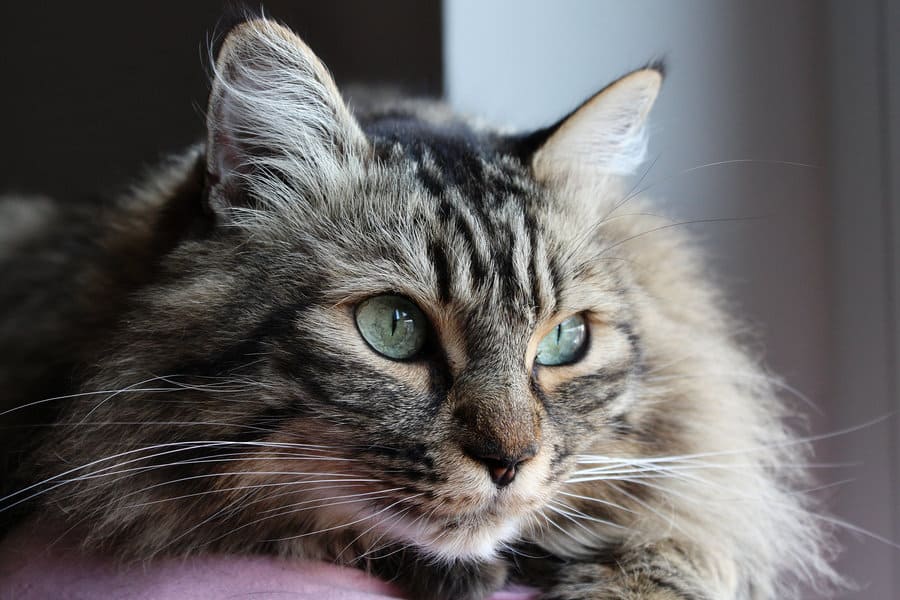
Temperament and Lifestyle
Discovering the Norwegian Forest Cat is like uncovering a hidden gem of the cat world. Their unique temperament and lively personality create a fascinating blend of gentleness and adventure.
Whether inside the house or exploring the great outdoors, the Norwegian Forest Cat thrives. They adapt easily to both indoor and outdoor living, embracing a lifestyle that matches their wild roots.
Adventurous and playful, they love to explore. You'll find them climbing trees, chasing toys, or even scaling rocks.
Though energetic, they are gentle and love human company. Their bonding with one person in particular often forms a deep, affectionate relationship.
Talkative by nature, these cats aren't shy about expressing their needs. Their interactive disposition makes them not only intelligent but an active participant in family life.
Personality: Intelligent and Engaging
The Norwegian Forest Cat is friendly and intelligent. They fit well with families, always eager to be part of the action.
High energy defines this breed. They love games, interaction, and constant mental stimulation.
Noted by enthusiasts, the Norwegian Forest Cat has a distinct chirping sound. This high-pitched vocalization adds a whimsical touch to their character.
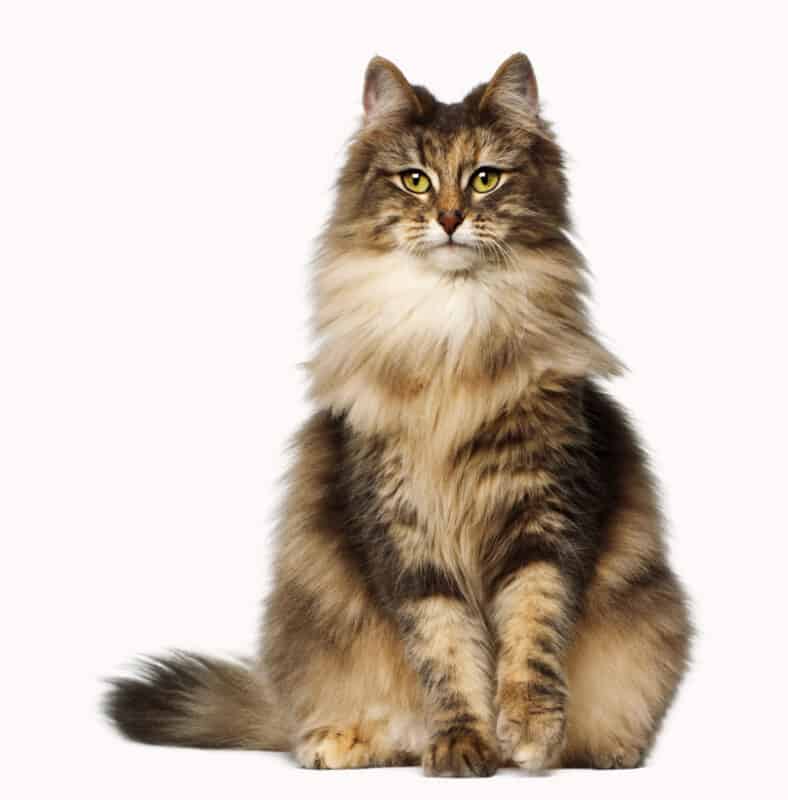
Myths, Folklore, and Recognition
From myths and legends to international recognition, the journey of the Norwegian Forest Cat is filled with intrigue and charm. Let's explore the captivating history and unique identity of this special breed.
Myths and Folklore: A Connection to Norse Mythology
The myths and folklore about this breed are numerous, going back to the Norse god of love,
Linked to the Norse god of love, Freya, legends tell of her chariot drawn by two enormous grey cats. This enchanting tale hints at the mythical status this breed holds within Scandinavian folklore.
Recognition: From Obscurity to Fame
The Norwegian Forest Cat has been part of our world for a long time, but its journey to recognition has been anything but smooth.
Though the breed was known and loved, attempts to officially recognize it began in the 1930s. A few of these majestic creatures even graced cat shows.
World War II came, and the breed was overlooked and forgotten for some time. The war's shadow pushed the cat into obscurity.
The 1970s marked a turning point. A special breed program breathed life back into the Norwegian Forest Cat's recognition. In 1977, the breed finally achieved its distinct pedigree status.
Now, the breed enjoys recognition not only in Norway and Scandinavia but all around the world. The breeding program's success has ensured the legacy of this enchanting cat, with novices no longer allowed to participate in breeding.
Popularity in Scandinavia and Cat Shows
The Norwegian Forest Cat has not only charmed the hearts of people in its homeland but also captivated audiences at cat shows. Let's explore how this breed has become a sensation both locally and on the competitive stage.
Imagine walking into a cat show and being greeted by as many as 200 Norwegian Forest Cats. That's what you can expect at some events. Their striking appearance and poised demeanor steal the spotlight every time.
What makes this breed so popular at these shows? It's the combination of their unique looks, intelligent eyes, and elegant movements. Judges and spectators alike can't help but admire them.
Conclusion: From Home to the Stage
The Norwegian Forest Cat has won the hearts of people in Scandinavia and beyond. Whether in a cozy home or under the bright lights of a cat show, this breed knows how to shine. Its popularity is a testament to its beauty, grace, and mystique.
If you ever have the chance to witness this breed in person, don't miss it. The Norwegian Forest Cat's allure is something truly special to behold.
SIGN UP FOR THECATSITE'S EMAIL UPDATES >
Writing Contributions by Anne Gro Bergerson
Comments? Leave them using the form below. Questions? Please use the cat forums for those!
Note: We may get commissions for purchases made through links on this page.

